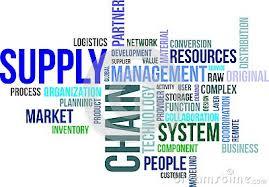- 1-800-761-8017
- Contact Us
- Member Login
- Get Listed Today

There’s little doubt that the supply chain increasingly will be automated. But whether you’re a Luddite or futurist, it can be easy to ignore the long, winding road that lies ahead before driverless vehicles and predictive alerts to shippers on potential disruptions are the standard.
How long it takes before this future becomes reality is impossible to gauge. The acceleration of technology over the last five years signals to some that we haven’t seen anything yet, and they may right. A closer look at the various challenges in adoption and the slower-than-expected pace of other predicted sea changes, however, should give the optimistic and pessimistic a grounding in reality.
The promise of automated trucks, perhaps, is grabbing the most headlines and industry attention; rightly so, considering the potential for efficiencies and scarcity of skilled, long-haul drivers. Rarely mentioned, however, are the onerous regulatory challenges ahead, including counter-lobbying from the Teamsters union, Class I rail operators, and, potentially, safety advocates. One high-profile accident could stall or scrap regulation, much like the trucking industry’s efforts to tweak hours of service collapsed after comedian Tracy Morgan was severely injured when a Wal-Mart truck hit his limousine.
With all this in mind, it’s more likely that autonomous trucks will still feature a human participant in case things go amok, akin to how airline pilots are in the cockpit even though much of the navigation is computer controlled.
There are also limits to automation within distribution centers, particularly those handling e-commerce. Because of the daily and seasonal peaks, it’s often more cost-effective to have standard volume flows automated and then scale up human staffing during the surges, David Egan, head of industrial and logistics research in the Americas for CBRE, said at this month’s JOC Inland Distribution Conference in Atlanta.
“There are circumstances in which automation is not a good fit for the situation, often because it is cost-prohibitive, he told JOC.com. But there are also tens of thousands of justified DC-automation implementations.”
In the ocean shipping space, automation has helped propel the emergence of so-called digital forwarders. But there are limits to how much can be automated, and those become clear when something goes wrong, said Dan Gardner, president of consulting firm Trade Facilitators. “Clearly, there isn’t a logistics professional on the planet that is going to rely solely on what a website is telling them about a rolled container or a rejected (Automated Export System) submission, he said in a recent commentary. “When things go awry, shippers want to talk to another human, and the person on the other end of the line better know what they’re talking about.”
In fact, automation is transforming the back end more than in terms of actual freight movement. automating mundane processes such as motor carrier selection, route optimization, invoice payment, and more. Even there, there is resistance, “We’re not the fastest-moving industry,” Mitch Weseley, CEO of transportation software provider 3Gtms, said in October at a Chicago conference. “Something that works is hard to displace. If something works, you need a big business reason to change to something new.”
And it has to make financial sense. About 15 years ago, retailers were marveling at the potential radio-frequency identification held in increasing visibility to better manage inventory. The high cost of the RFID tags prevented widespread adoption, and the technology hadn’t proved itself either, Egan said. Now, RFID is used in specific areas on the supply chain, a far cry from the global adoption predicted. The technology, Egan said, hasn’t been “the silver bullet to solve visibility in dark areas of the supply chain that the initial hype led us to believe.”
Login or Register to Start Chatting |
-(2).png)